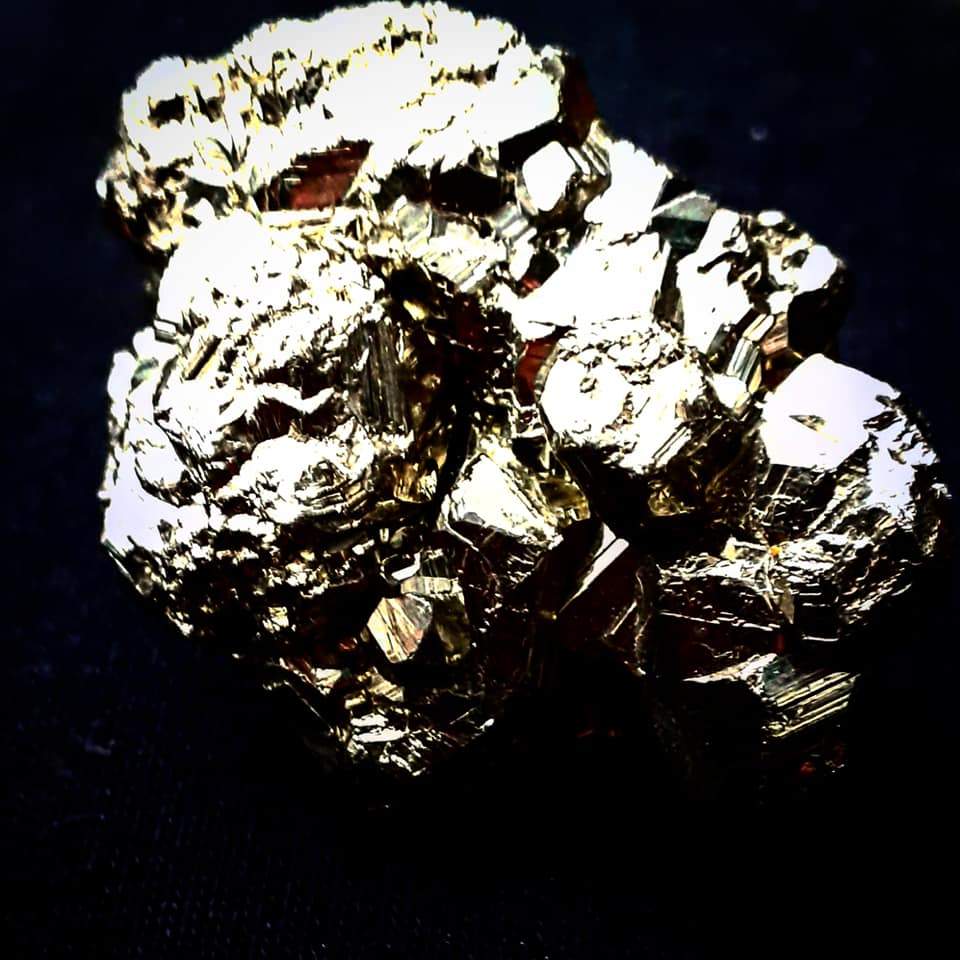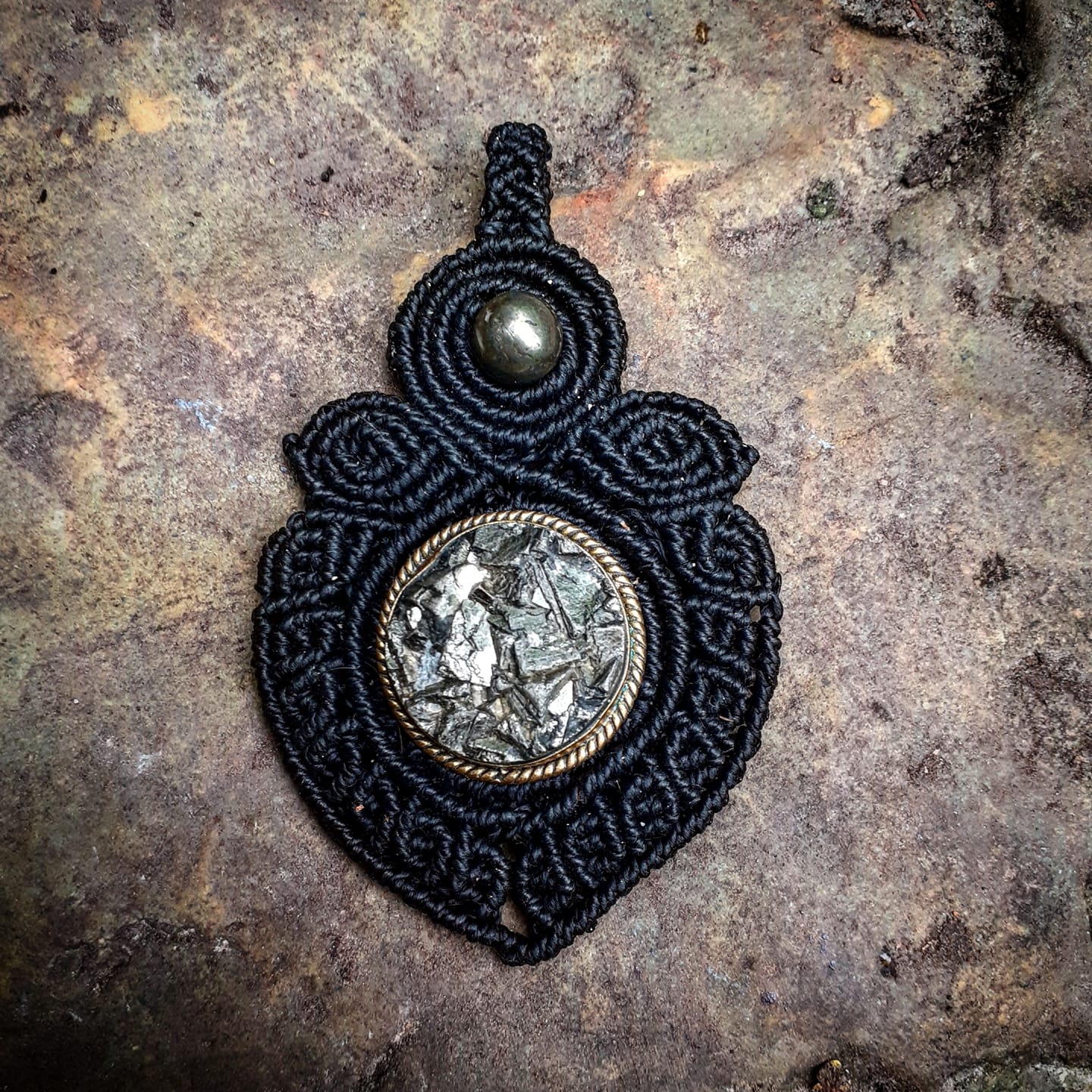Today, I decided to talk about another of my passions: minerals and gemstones.
During my travels, I was able to admire beautiful specimens, and I fell in love.
Then, during my first trip to Brazil (2014) , I learned the work of micro-macramé , which now allows me to set my own minerals with great passion.
I hope to make you discover day after day some stones, their origins and ancient uses ...
The PYRITE stone :
Pyrite takes its original name from the Greek "pyros", meaning "fire".
Long before it was given this name, it was used in prehistoric times to make fire.
During the gold rush, pyrite was nicknamed "the gold of fools", because miners often confused it with gold.
Its chemical composition is :
Iron bisulfide, FeS2
Its main deposits are :
Spain, Italy, Peru, United States...
The colors of pyrite are
yellow to golden brown, metallic luster
Some traditions:
- In India, the pyrite stone represented the golden reed Vishvakarma, the architect of the universe.
- In Buddhism, the pyrite stone represented the materialization of mental constructions.
- They also represent the "iron wedding" (41 years of marriage)

Environnemental impact :
As everyone knows, every modification that man makes to nature can cause environmental impacts of varying severity.
In the case of mining, this inevitably involves an alteration of the natural environment.
The waste produced by the mining activity can contaminate waterways or infiltrate the soil and thus seriously pollute the environment.
Depending on the type of mining process, soils may contain acidic or caustic compounds, heavy metals, cyanide, which will generally make the land unsuitable for any future use.
Quarries can be contaminated by acidic water, which may contain high concentrations of dissolved heavy metals and seep into the subsoil.
The removal of the original fauna and flora from these sites can cause holes in the food chain of the remaining animals and major problems of recolonization by plants once the mining activity is over...
Concerning pyrite, it can contain traces of nickel (Ni), cobalt (Co), arsenic (As), copper (Cu), zinc (Zn), silver (Ag), gold (Au), thallium (Tl), selenium (Se) and vanadium (V).
Pyrite was exploited for a long time as a source of iron and sulfur. A very polluting industry which is beginning to be replaced by other processes. Currently, 6.6 million tons of pyrite are extracted each year (6 million tons in China alone). However, it is no longer used as a source of iron for steel making because its extraction cost is higher than that of other ores.
However, it remains the basic ore for the manufacture of sulfuric acid and is exploited in many deposits for the production of gold, copper, cobalt, nickel ....
Here is one of my realizations in pyrite and micro-macramé
Ewahee/instagram Ewahee/facebook

- Here you can see a polished pyrite in the form of a pearl and a raw pyrite set with brass and weaving in micro-macramé.
I hope you enjoyed this article, do not hesitate to tell me which stone you would like to discover in a future article!
Do not hesitate to comment, to give me constructive remarks which help me to progress in my articles!
Nice evening to all !
Congratulations @ewahee! You have completed the following achievement on the Hive blockchain and have been rewarded with new badge(s):
Your next target is to reach 100 upvotes.
You can view your badges on your board and compare yourself to others in the Ranking
If you no longer want to receive notifications, reply to this comment with the word
STOPTo support your work, I also upvoted your post!
Check out the last post from @hivebuzz:
Support the HiveBuzz project. Vote for our proposal!